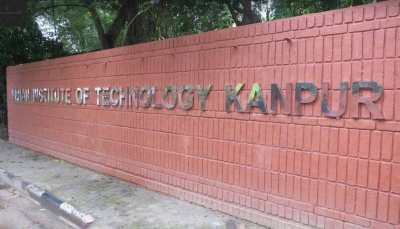IIT Kanpur establishes Advanced Technologies for Monitoring Air-quality

Kanpur, Nov 6 : The Indian Institute of Technology Kanpur (IIT-K) has established a Centre of Excellence (CoE) named ATMAN (Advanced Technologies for Monitoring Air-quality iNdicators).
The CoE is a significant step towards the Atma Nirbhar Bharat initiative of the government, focusing on building indigenous low-cost sensor manufacturing and Artificial Intelligence/Machine Learning (AI/ML) capabilities to enhance air quality across urban and rural areas of India.
According to an official release, the CoE ATMAN aligns with the vision of the Principal Scientific Advisor of India, aiming to translate sustainable technologies and business models into practical products and services accessible to millions globally.
Supported by philanthropic entities, including Bloomberg Philanthropies, Open Philanthropy and the Clean Air Fund, ATMAN aims to address critical air quality challenges with cutting-edge technology.
Prof. S Ganesh, Officiating Director, IIT Kanpur, said: “IIT Kanpur has taken significant strides in the battle against air pollution. This initiative of establishment of the Centre of Excellence — ATMAN has firmly positioned the institute at the forefront of efforts to combat air pollution. Through ATMAN, IIT Kanpur is dedicated to the meticulous evaluation of health risks associated with air pollutants, as well as a comprehensive review of air quality standards.”
There are several projects that are currently underway at the ATMAN.
The Ambient Air Quality Monitoring of Rural Areas using Indigenous Technology (AMRIT) is a flagship project that will deploy a dense Sensor Ambient Air Quality Monitor (SAAQM) network with 1,400 nodes across rural areas in the states of Bihar and Uttar Pradesh.
This initiative is the first of its kind to monitor air quality comprehensively in these regions, where data has been limited to cities and towns.
The CoE team will be working with the State Pollution Control Board of Bihar and Department of Environment, Forests & Climate Change of Uttar Pradesh on AMRIT to enhance air quality action in these states.
The Dynamic Hyper-local Source Apportionment (DHSA) is a cost effective approach to source apportionment that is currently being pioneered in Lucknow and Kanpur in Uttar Pradesh.
The data from DHSA will enable city authorities to make informed decisions in their air quality action planning.
The long-term vision is to scale DHSA systems across cities in the country to inform about emission and sources of air pollution on a dynamic scale based on this project.
The PM2.5 Prediction and Airshed Management is a project that utilises micro-satellite imagery, sensor-based ambient air quality networks, and machine learning to predict PM2.5 levels at finer resolutions.
Additionally, the CoE is developing an airshed approach to address air pollution on a larger scale with data-driven policy decisions.
Prof. Ajay Sood, Principal Scientific Adviser to the government, said: “The CoE ATMAN has been setup to strategise and execute projects in the field of air quality with indigenous sensor manufacturing that is scalable globally.”
Prof. Sachchidanand Tripathi, who heads the Centre of Excellence (CoE), expressed enthusiasm for the impactful research that is underway, “CoE ATMAN is spearheading the infusion of Indigenous Technology towards an Atmanirbhar Bharat. Association of State Government Departments in Bihar and UP, is helping bridge the gap in data driven Air Quality Management (AQM) policy.”






